You step into the bathroom to do your business when you hear whining behind the door. You open the door and – surprise! – it’s your dog, giving you their best puppy dog eyes and begging to be let in.
If you have what people call a “Velcro dog,” then you know what it’s like to have a dog that follows you everywhere you go.
But what’s the explanation behind this sometimes adorable, sometimes annoying clinginess? And should you be worried?
Join us as we explore this subject!
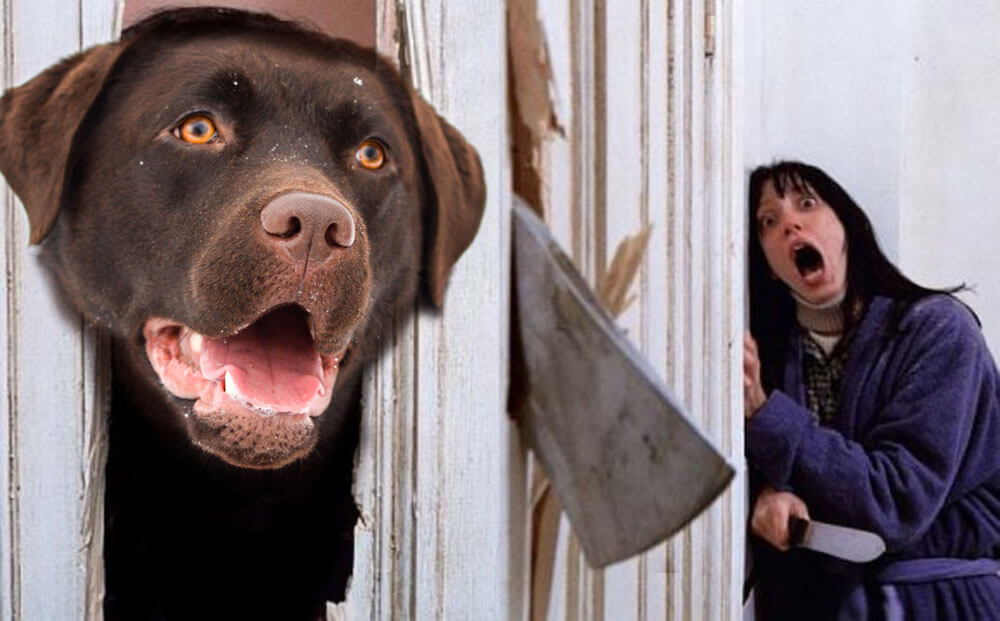
The Main Reasons Why Dogs Follow Their Humans
There are various possible reasons why your dog follows you everywhere, including:
1. Your dog adores you
The answer to “Why does my dog follow me everywhere?” is often as simple as “Your dog loves you and is happy to be around you.”
Dogs evolved to be social creatures. Every time they’re near or interact with their owner or another beloved pack member, several hormones are released into their bloodstream. Dopamine and serotonin make a dog happy. Then there’s the “love hormone” oxytocin, which, in addition to giving a dog warm and fuzzy feelings, relaxes them, deepens their trust in their owner, and strengthens the canine-human bond.
So why shouldn’t your dog follow you everywhere when being around you is so emotionally rewarding to them?
2. Need for a constant companion
A dog’s shadowing behavior may be linked to their nature as a pack animal.
In the wild, pack animals find security, safety, and joy when surrounded by family members. In fact, being solitary is more likely to lead to starvation, the failure to reproduce, and an early death.
Domestic dogs retain this instinctive need to have a pack they can call their own, so they stick close to you because it satisfies their desire for socialization, connectedness, and companionship. Which is great news for us dog owners, because having an adoring canine companion is as good for us as it is for our fur babies.
3. They respect your leadership
Many dogs follow their owner because they see said owner as the leader of their pack.
In the wild, puppies learn that their parents provide them with food, shelter, and safety. Even as they grow more independent, they continue to respect their parents’ authority as their teachers and protectors.
It’s the same with domestic dogs and their human owners. As your pet’s primary caregiver, you become the pack leader that must be followed and respected.
4. Hunger
Dogs can’t speak, so the only way they can tell you they want food is through their body language – and sometimes, that means sticking to you like glue and staring at you like you’ve just murdered their littermate.
Dogs are also creatures of routine. If they know you’re supposed to feed them in the morning but you’ve yet to bring out their food bowl, they’ll grow antsy. Alternatively, they may become increasingly excited as mealtime approaches. The result in either case is a Velcro dog that refuses to leave your side.
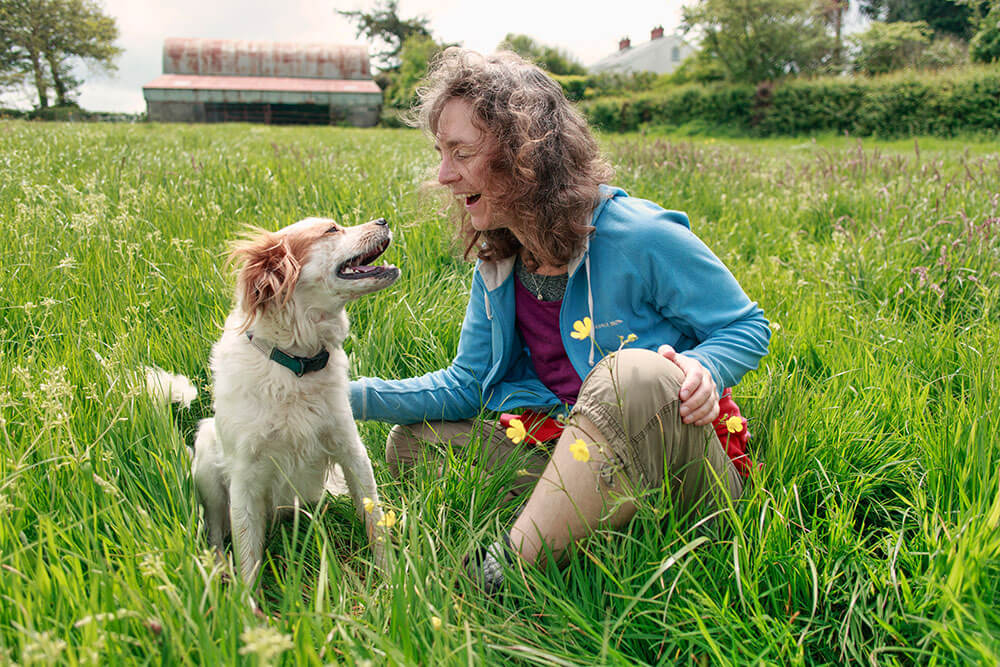
5. They want to be walked
If there’s one thing dogs love nearly as much as food, it’s going out for walks. Walks allow canines to release pent-up energy, explore their surroundings, interact with other dogs and people, and enjoy a gamut of other experiences that nourish both mind and body.
As stated above, dogs love their daily routines. If you don’t walk your pooch on time, they’ll worry you’re shirking your duties as a pet parent. So the next time your dog follows you everywhere, try to determine if you’ve forgotten to do something that’s important to your dog.
6. Boredom
Boredom is among the key causes of strange and/or destructive behavior in dogs.
Many dogs, especially those selectively bred for specific tasks, require regular exercise and mental stimulation to stay happy. If they’re stuck at home all day doing nothing, they may shadow you in an attempt to tell you they’re bored or to figure out if you have something fun in store for them. Worse, they may start acting out, which in most cases means chewing the furniture, your shoes, or your other possessions.
Whether or not your pooch belongs to one of those high-energy breeds, you must exercise your dog regularly to prevent boredom. Daily exercise, frequent training sessions, and games such as fetch greatly help. As social animals, dogs also benefit from having other canine companions they can play with, so get another pet or take them on trips to pet-friendly locations such as the local dog park. Lastly, you should provide your dog with chew toys and brain-teasing food puzzles.
7. Need for attention
A dog may follow you everywhere to catch your attention. As stated above, perhaps they need you to do something for them, such as feed them or take them for a walk.
At other times, this attention-seeking behavior points to a deeper, psychological need. For instance, your dog may feel you’ve been ignoring them and misses your affection. If a rescue dog was neglected and abandoned by their previous owner, they may have separation anxiety. The result? They follow you everywhere to make sure you don’t desert them, too.
Spend lots of quality bonding time with your dog. This will help them grow confident that your love doesn’t go away the moment you stop interacting with them.
8. They need help
“Why does my dog follow me everywhere?” Maybe the answer lies under the couch.
If your dog accidentally kicks their favorite ball under the furniture, chances are they won’t be able to get it out themselves. So your dog suddenly starts following you because they need you to retrieve the ball for them.
Of course, there are countless reasons a dog may need human intervention. Maybe they want their fur parent to open the door to the backyard. Maybe one of their canine companions stole their favorite chew toy. Or maybe their owner was just in a car crash and they need another human to save their life. Whatever the case, a dog suddenly trailing a person may be a dog that requires assistance.
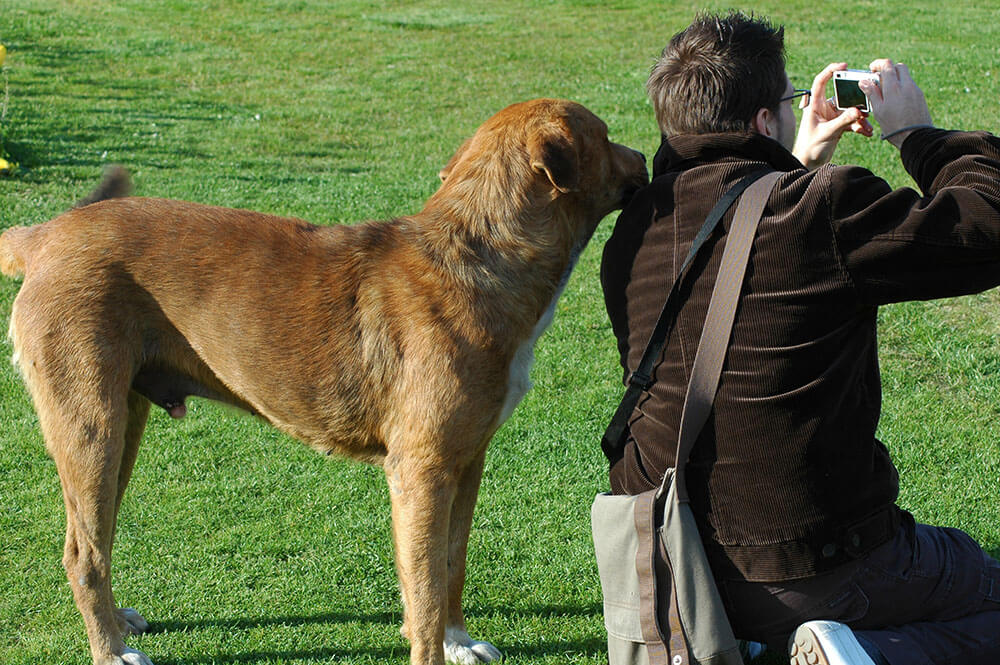
9. You reinforced the Velcro dog behavior
Do you smile and speak in a happy tone every time your dog follows you? Do you call them a “good dog” or give them treats? If so, you may have inadvertently reinforced your dog’s behavior.
One of the best training techniques is positive reinforcement. This simply means encouraging a dog to repeat certain behaviors by rewarding these behaviors using treats, praise, etc. Over time, a dog learns to repeat desirable conduct in anticipation of such rewards, and avoid unacceptable conduct knowing it won’t do them any good.
Unfortunately, it’s possible to accidentally reward any behavior – even undesirable ones. For instance, if you laugh and pet Fido every time they lie on the couch instead of the dog bed, they may associate this action with making you happy. So if you want to stop your dog’s shadowing behavior, make sure you cease rewarding it.
10. Curiosity
Dogs are naturally curious creatures, so they may follow you to figure out if anything interesting is happening. For example, if they smell the food you’re cooking, they may hang around to see if you’re willing to give them some. If they notice you’ve dressed up to go outside, they’ll observe you to check if you mean to bring them with you.
Most dogs have an excellent sense for things that involve them. So if they suspect you have something fun planned for them, they’ll adhere to you in happy anticipation of the activity.
11. Separation anxiety
While the root cause of separation anxiety remains unknown, it’s widely accepted that being ripped from a beloved family member can cause a dog to develop this issue.
If a puppy is separated from their mother and littermates too soon, they may develop separation anxiety. If a dog is juggled between guardians, neglected, or abandoned, they may develop separation anxiety. Even bringing a rescue dog home can cause problems if it tears them away from a fellow shelter dog that they rely on for companionship.
If a dog follows you around due to this concern, they may also resort to other odd and/or destructive behaviors whenever you leave the house. They may bark, howl, and freak out; urinate and defecate in inappropriate places; chew the furniture, carpet, your clothes, and other things; dig up and destroy the yard; excessively pant and pace; eat their own poop; and escape.
If being away from you causes your dog significant emotional distress, don’t hesitate to seek help from professionals. Anxiety-prone Velcro dogs can be treated using anti-anxiety medication prescribed by a licensed veterinarian. A dog trainer or animal behaviorist’s counterconditioning techniques can also help.
12. Fear, stress, or anxiety
Dogs experience fear, stress, and anxiety like their human owners and other animals. And some dogs are more prone to emotional distress than others.
Certain noises, such as fireworks and thunder, can make your furry best friend panic, so they may cling to you for safety and security. If they’re wary of strangers, they’ll stick to you either to protect you from danger or to assure themselves you’ll keep them safe from harm.
Whatever the reason behind Rover’s psychological issues, know that help is available. Vet-prescribed anti-anxiety drugs can manage fear, stress, and anxiety, while a dog trainer/animal behaviorist can figure out the cause of your dog’s problems, then develop strategies to address them.
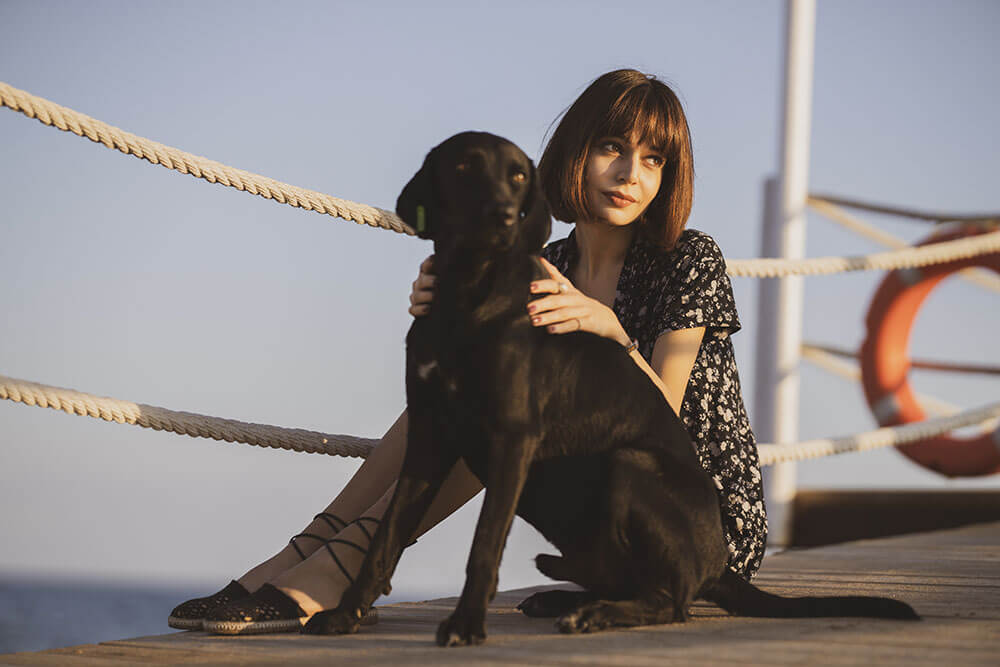
How to Stop Your Dog From Following You Everywhere
Is your dog so clingy that the concept of personal space has become alien to you? If so, don’t worry; there are several tactics pet owners can employ to reduce a dog’s shadowing behavior.
1. Seek help from a professional
It’s possible your dog follows you around because it’s their only way of telling you they’re unwell and in need of help. For this reason, among the best things owners can do when their pooch becomes extra clingy is to seek veterinary advice.
A vet can treat psychological issues using medication. They can also recommend trainers or animal behaviorists who can help your dog cope with distress and unlearn undesirable behaviors.
A dog’s underlying anxiety, stress, or fear may also be symptoms of medical issues. It’s for this reason owners should contact a vet if none of the tips below work. Once a vet treats a dog’s health problems, you can expect their behavior to improve.
2. Keep your dog preoccupied
As stated earlier, dogs need regular physical activity and mental stimulation to stay happy and healthy. Boredom can result in new behavior that’s as bizarre as it is annoying.
Walk your dog daily. Play games such as tug and fetch with them. Take them to pet-friendly locations and go on hikes together. Train them at home and enroll them in obedience classes. All these activities will not only nurture your dog’s body and mind but also leave them exhausted – and a tired dog is less likely to behave in an off-putting manner.
Also, make sure to provide your dog with an assortment of things to play with, including chew toys and food puzzle toys. To keep things exciting and interesting, try switching the toys that are available to them every day.
3. Build your dog’s confidence
Among the best ways to develop your dog’s confidence is to train them.
Training is a big deal as it strengthens a pet’s trust in their owner and deepens the human-canine bond. This creates a dog that’s less likely to believe you mean to abandon them every time you step out of the house.
Training also makes canines confident in their abilities and gives them a sense of belonging in your pack. Not to mention it provides a dog’s brain with the exercise necessary for their mental well-being, thus preventing unusual behaviors such as excess clinginess.
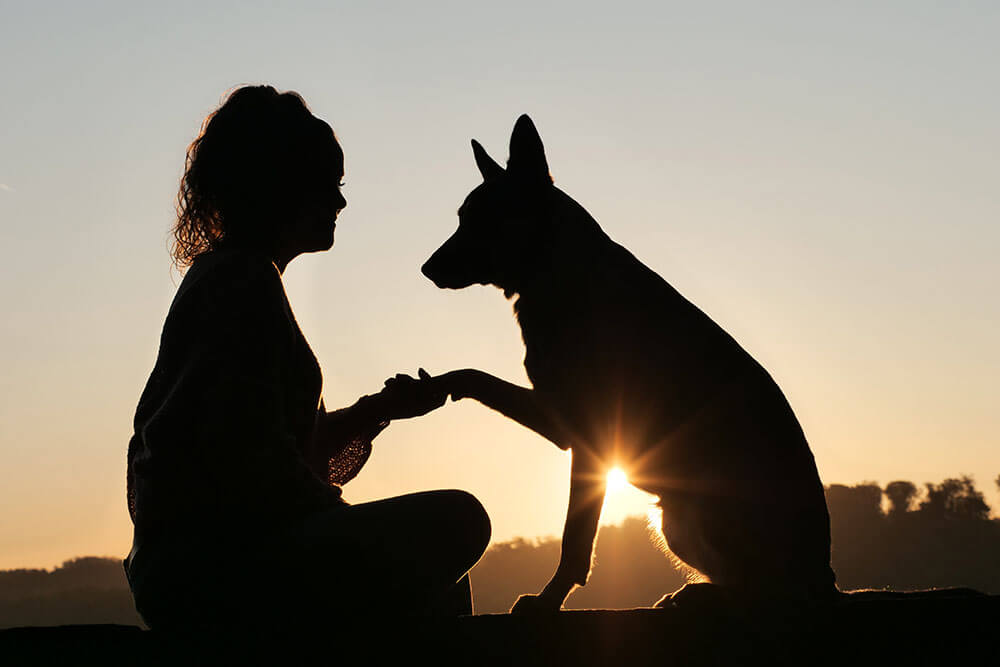
4. Teach your dog specific commands
Certain commands can go a long way in curbing doggy clinginess.
Teach your dog “Sit!” and “Stay!” As training progresses, lengthen the amount of time you have your dog stay still in one place. You should also move farther and farther away from your dog until you’re somewhere they can’t see you. Use praises to encourage your dog, then reward them with a treat for obeying you.
Over time, your dog will learn that 1) obeying you is rewarding, and 2) they don’t have to follow you all the time to be rewarded.
5. Be consistent with your training
Many dog breeds respond well to proper, consistent training. Therefore, use specific words and hand signals for specific commands and only reward good behavior.
Be cautious about your own actions to avoid inadvertently encouraging your dog to repeat unacceptable behavior. When they follow you around, don’t smile at them or behave in any other way that they may see as positive. In fact, it’s best to ignore your dog in such situations. Do reward them when they detach themselves from your side, such as when they go away to lie down on their own bed.
6. Reward your dog attention when they leave you alone
As stated above, pay your dog attention only once they’ve left your side. Once your pet is in their crate or bed, approach them, then heap rewards on them in the form of praise, treats, belly rubs, ear scratches, and the like. This will let them realize they’re more likely to receive attention and affection if they don’t stick to you like glue 24/7.
7. Don’t punish your dog
Shouting at or physically hurting your dog can worsen their anxiety and result in more unacceptable behavior. The best way to tell a dog you don’t approve of their actions is to ignore them. Occasionally, you can raise your voice and say commands like “Stop!”
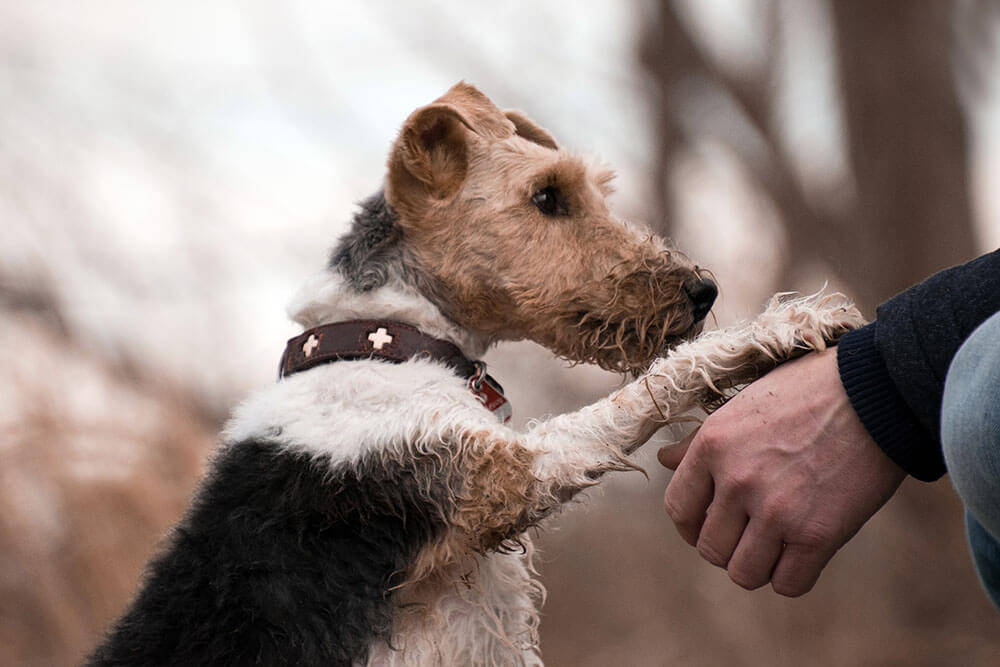
8. Be consistent with your routines
Disrupting the routine your dog is familiar with can be quite upsetting for them, so make sure to adhere to your daily schedule.
If your dog is used to being walked every morning, do your best to walk them every morning. While you can add variety to your dog’s food, make sure you feed them the same number of times at the same hours every day.
Moving to a new home presents a big difference from what your pet is used to, which is why it’s known to cause anxiety and other issues in dogs. If such a drastic change is unavoidable, strictly observe other routines and distract your dog with physical activity and mental stimulation.
9. Use crate training and/or baby gates
Proper crate training is beneficial to dogs in many ways. For instance, it can help dogs get used to being physically separated from their family members. Over time, they’ll no longer feel anxiety whenever their owner leaves the house. They won’t even need to sleep next to you on your bed to feel safe at night.
You can also use a baby gate. This will prevent a dog from clinging to you but allow them to see you. A needy dog won’t like the distance at first, but it won’t be long before they learn that they don’t have to be stuck to you to be happy.
To distract an anxious dog, give them toys to play with. Also, don’t separate yourself from your dog the whole day; a few hours per day should do. Eventually, your dog will grow comfortable being alone and will no longer need to follow you.
10. Socialization
While every dog needs to form a close relationship with their owner, they also benefit from interacting with other people and pets. Therefore, as early as possible, ensure your pooch makes plenty of new friends. This will build their confidence, satisfy their need for social interaction, and teach them not to be overly dependent on you for their happiness.
11. Avoid quiet
Dogs with separation anxiety tend to find silence deafening. Every time you step out of the house, leave the radio or TV on so your dog doesn’t feel so alone.
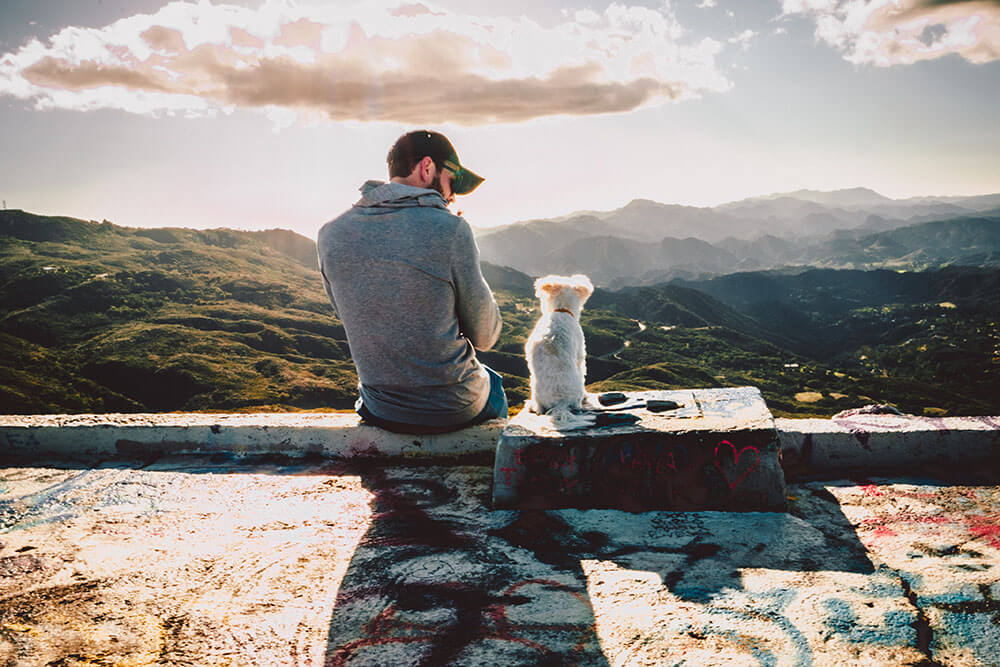
FAQs about dog clinginess
It’s time to answer some of the most commonly asked questions about doggy clinginess!
Q: My dog follows me everywhere. Should I seek help?
A: Contact a veterinarian and/or animal behaviorist if your dog’s behavior:
- Persists or worsens
- Is accompanied by sudden, strange behavioral changes
- Is accompanied by symptoms of medical problems
- Is accompanied by symptoms of psychological problems such as chronic anxiety, stress, or fear
- Is starting to bother you
Q: My dog follows me everywhere. Is this normal?
A: It depends. Some dog breeds are prone to shadowing behavior, in which case sticking to you like flypaper is normal. Puppies are also more likely to follow you around as they’re heavily dependent on their caregiver.
Of course, just because something is normal doesn’t mean it isn’t irritating, so you may want to try curbing the behavior using the techniques discussed in the previous section.
You’ll know your pet’s behavior isn’t normal if it persists or worsens, if they’re also showing symptoms of medical or psychological issues, or if it’s accompanied by other odd, sudden changes in behavior.
Q: Which breeds are prone to becoming Velcro dogs?
A: Breeds created to work for or side-by-side with humans are inclined to follow their humans around. Examples include herding dogs, working dogs, scent work dogs, guard dogs, therapy dogs, and other dogs bred to obey human orders.
For this reason, you’ll often see clingy behavior in breeds such as:
- Border Collies
- German Shepherds
- Golden Retrievers
- Hungarian Vizslas
- Labrador Retrievers
- Shetland Sheepdogs
Certain toy breeds and lap dogs were also created to find comfort in being as close to their humans as possible. Examples include:
- Cavalier King Charles Spaniels
- Chihuahuas
- French Bulldogs
- Maltese
- Pugs
Q: Why does my dog follow me but not the other members of my family?
A: Dogs make intelligent pets; often, they can single out their primary caregiver. Are you the person who’s always feeding them, taking them for walks, and supplying them with much-needed love and attention? Then you’re the most rewarding human in existence and therefore the family member to latch on to!
Q: Why does my dog follow me to the bathroom?
A: Dogs are intensely curious animals, so they’ll go wherever their nose picks up fascinating scents. The bathroom just so happens to be home to a plethora of scents just asking to be explored – not to mention your dog wants to know how you’re related to those odors.
Q: Why does my older dog follow me everywhere?
A: Older dogs may trail their owners simply because they’re used to it.
However, if an independent senior dog suddenly started latching on to you, it could be because their health is on the decline. Alzheimer’s, arthritis and joint pain, and vision or hearing loss can all make older dogs clingy.
Have a vet examine your senior pets if they start engaging in odd, new behaviors.
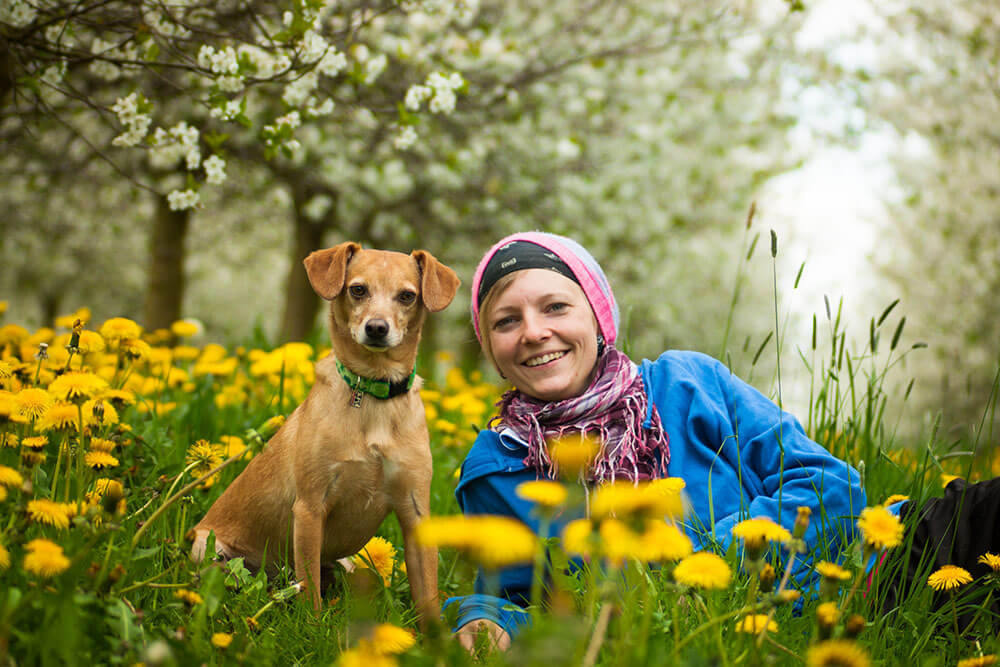
Clingy Dogs: The Conclusion
Dogs follow their humans for various reasons. Maybe they want food. Maybe they need help retrieving their favorite toy from under the bed. Or maybe they’re afraid you’ll vanish the moment they look away.
Whatever the reason behind your doggo’s behavior, it’s your duty as their fur parent to determine if their clinginess is a sign of an underlying problem. Your pet will also benefit from any help you can give them. So keep an eye on your dog, and speak to a vet if you notice any troubling issues. Your dedication will ensure your dog lives a happy and healthy life!
